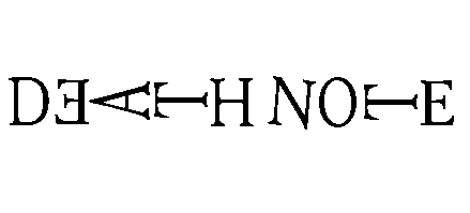
10 Reasons DEATH NOTE Is the Best Manga Series Ever
On August 25, Netflix will be releasing a live-action version of Death Note set in the U.S., despite its Japanese origins. There have been several film/TV versions of the manga series already.
As each screen adaptation brings a new wave of fans, it’s a good time to sum up the reasons Death Note is the best manga series ever.
- The premise is fascinating. If you stumbled across a notebook that allowed you to kill anyone just by writing down their name, would you use it? If so, would you use it for good, for evil, or for something more ambiguous? How would the murders be executed? There’s so much room for this plot to spin.
- It’s an intriguing take on the Japanese mythological figure of the shinigami, a god of death. Illustrator Takeshi Obata has made the barren shinigami realm vivid and memorable. This is also true of the shinigami characters, who all take different forms. The main shinigami in Death Note, Ryuk, is its most entertaining character. Ryuk is a towering, fearsome, Edward Scissorhands-looking creature who’s fun-loving, gleefully uninterested in morality, and, um, obsessed with apples.
- As the previous point hinted, Death Note doesn’t take itself too seriously. One of the heroes, L, is a perpetually wired man-child. His main character trait is the odd way he sits on a chair.
- Over the course of the 13 volumes, there are more twists and turns than a typhoon. Some of the plot developments might be predictable, but others are genuinely gasp-worthy. Writer Tsugumi Ohba does an excellent job of keeping readers guessing.
- Though principally set in Japan, the series is somewhat international in scope. After all, a serial killer who strikes in multiple countries is bound to be of interest to more than one police force. Indeed, international cooperation (mainly between the U.S. and Japan) becomes an important plot line.
- The rules of the death notebook become hilariously convoluted. Each volume of the series contains increasingly specific and detailed rules of use. At first, these are basic and straightforward. For instance, “If the cause of death is not specified, the person will simply die of a heart attack.” Sure, that seems reasonable. Less so is the following instruction, which is crying out for a good edit: “In order to see the names and life spans of humans by using the eye power of the god of death, the owner must look at more than half of that person’s face. When looking from top to bottom, he must look at least from the head to the nose. If he looks at only the eyes and under, he will not be able to see the person’s name and life span. Also, even though some parts of the face, for example the eyes, nose or mouth are hidden, if he can basically see the whole face, he will be able to see the person’s name and life span. It is still not clear how much exposure is needed to tell a person’s name and life span, as this needs to be verified.” Phew.
- The serial killer’s name is Kira, a play on “Killer.” This is endlessly amusing.
- In a gratifying bit of wish fulfillment for kids everywhere, adults are fundamentally hapless. The Japanese task force charged with bringing Kira down is especially useless. The most powerful and intelligent people in this universe are children, teenagers, and adults who behave like children.
- The main female character, model and “pop idol” Misa Amane, becomes more ambiguous and complex as the series continues. She initially seems cartoonishly frivolous, but the extent to which she’s willing to go for love and/or power is questionable. Plus, there’s some comedy mined out of burly Japanese police officers needing to go undercover as her agent, and getting sucked into the showbiz world as a result.
- The psychological cat-and-mouse between killer Kira and L, the eccentric criminal-profiling genius intent on catching him, is gripping. There’s lots of “does he know that I know that he knows?”-type speculation and mind games, as these two equally matched intellects square off again and again.











